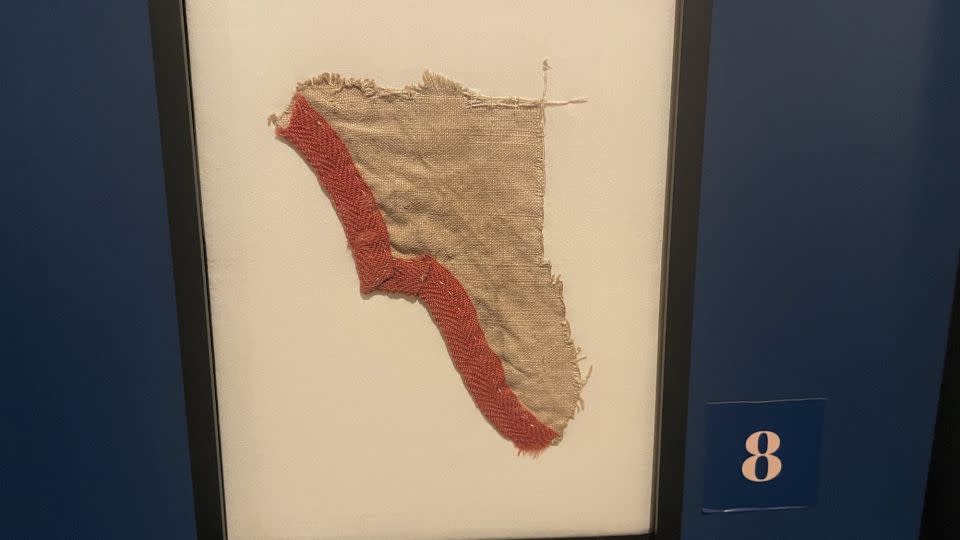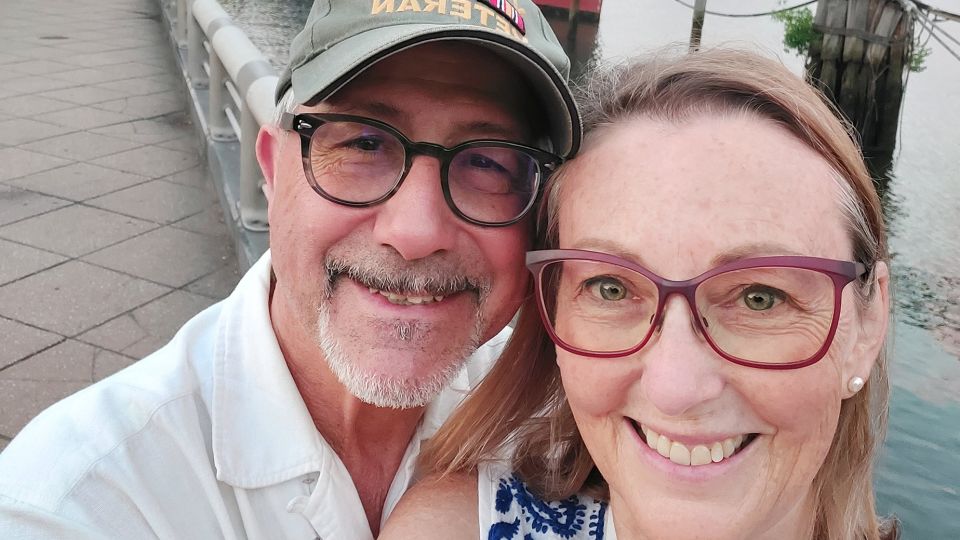As a collector of artifacts, Richard “Dana” Moore makes a habit of scrolling through Goodwill’s online thrift store, and one day in 2022, the history buff came across an item that piqued his interest.
A post in the historical documents section featured the image of a framed item purporting to contain a fragment of George Washington’s tent. It came with a written note saying the tent had been displayed at an exposition commemorating the 300th anniversary of the founding of Jamestown in the Virginia Colony.
“I was like, ‘This can’t be.’ So I was a little bit astonished,” Moore told CNN.
Moore was skeptical of the posting so he initially held off on bidding for two weeks.
“There are a lot of fakes out there,” he added. “There’s always something that’s not real, that looks to be real.”
Moore said he took a closer look at the torn note and determined it looked like it had aged over the years along with the fragment, which is 4 inches wide and over 5 inches long.
“I jumped in with both feet. I said, ‘Hell with it.’ I’m gonna bid on it,” he said.
Moore told CNN that he bid a little over $1,700 on the artifact and won. He initially didn’t tell his wife, Susan Bowen, and hid it in their home. Now, he said, she agrees that he hit it out of the park: The artifact was confirmed to be a piece of Washington’s dining tent, and Moore estimates it to be worth tens of thousands of dollars.
The artifact goes on display at a museum
Moore contacted the Museum of the American Revolution in Philadelphia in February last year. He knew the museum held Washington’s sleeping and office tent.
Matthew Skic, curator of exhibitions, told CNN the museum was excited but first needed to confirm the fragment was actually a piece of one of Washington’s war tents. Moore agreed to send the artifact to the museum for a conservator to look at the weave of the fabric.
“What’s really fascinating about this particular fragment is it retains some of the red wool trim on the edge of it, and that was telling us that this was likely cut away from the edge of the roof of the dining marquee,” Skic said.
While the museum is still trying to determine which gap the fragment might fill, its binding and hand-stitched linen point to it being the real thing. Also, the note that it came with is appropriate for the time period.
Once the museum confirmed the fabric’s authenticity they were excited to feature it alongside the rest of the planned exhibit around Washington’s sleeping and office war tent.
“This one is a lot of fun because it came from an unlikely spot,” Skic said. “You don’t expect to find these kinds of historical treasures in a place like that, although this is not the first historical treasure that has come up via Goodwill.”
The fragment, on loan from Moore, was put on display for public view in February of this year as part of the museum’s exhibit Witness to Revolution: The Unlikely Travels of Washington’s Tent. The fragment will stay in the museum until January 5, 2025, and then it will be returned to Moore.
The dining tent that Moore’s fragment belongs to is now being held at the Smithsonian. It is not on display for public view.
Symbols of Washington’s leadership
George Washington’s tents, as explained by the museum, have nearly 250 years of history. The tents, used during the Revolutionary War, held his sleeping and office quarters where he led meetings, planned strategies and wrote letters.
Over the years, the tents became a symbol of Washington’s leadership and the founding of the country following the Revolution.
The fragment was likely cut off the dining tent by a man named John Burns, who saw the tent on display in Norfolk, Virginia, at the exposition commemorating the founding of Jamestown. The tent itself was on loan from Mary Custis Lee, the great-granddaughter of Washington’s wife, Martha.
Lee’s father, George Washington Parke Custis, later owned the Revolutionary War tents and frequently set them up to host events. Two hundred years ago, he started cutting away pieces of George Washington’s tents as souvenirs.

“George Washington Parke Custis was seeing the tent as a way to connect people to the past. And there might have been a similar mindset in 1907 when this, this fragment of the dining marquee, was cut,” Skic said.
There are fragments known to have been cut by Parke Custis.
But Skic said there is still more to be learned from this fragment, especially about who Burns, the note’s author, might be.
Currently, Moore is the only known private owner of a piece of Washington’s tent. All of the others are in the Smithsonian and other museums.
Moore said knowing he bought the fragment gives him chills at night. It isn’t about the money or recognition for him. It’s about “breaking away from British rule and the beginnings of our country.”
“It’s the history behind it. Can you imagine the information and the things that were said within that tent?” Moore asked rhetorically.
Moore and his wife visited the museum earlier this month and said they were filled with emotion at the sight of the artifact.
“I never got chills like that in my entire life,” he said. “We were both over the moon. We still can’t believe it.”
For more CNN news and newsletters create an account at CNN.com
